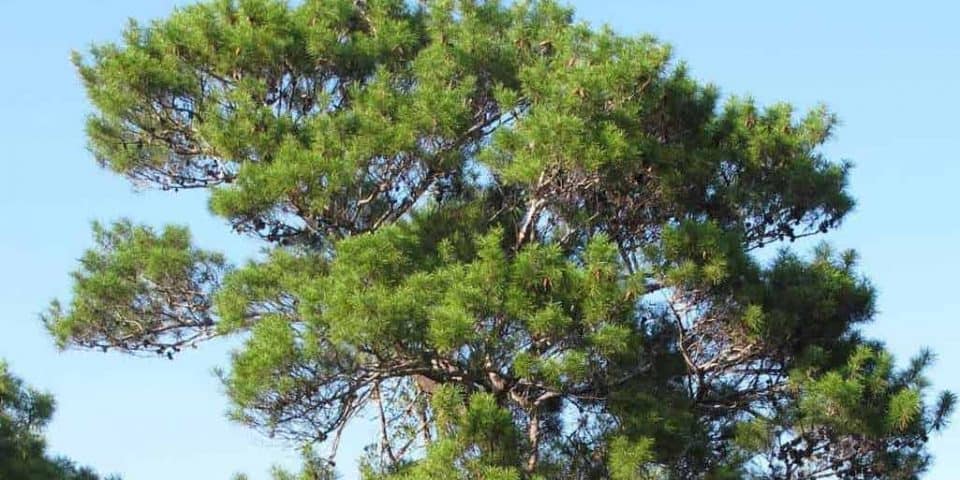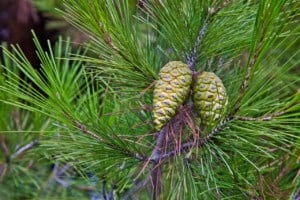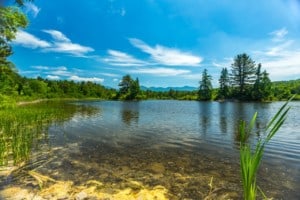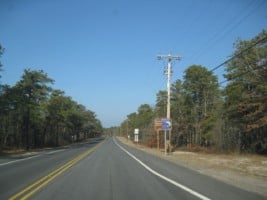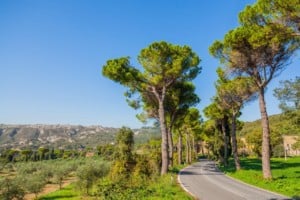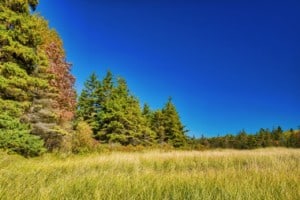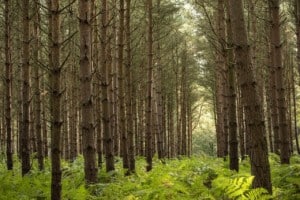Alabama has the perfect weather for growing hundreds of plants and trees, and indeed, the state is home to trees like the willow, cedar, poplar, redwood, beech, birch, and the pine tree. In fact, the Longleaf pine tree, or Pinus palustris Miller, is the state tree of Alabama, so pines are very important to the state.
Contents
Pine trees are coniferous trees that are usually around 150 feet tall when mature, although some of them have been known to get to more than 240 feet in height.
Pine trees have four different types of leaves, but most people are most familiar with the needle type. Pine trees live from 100 to 1000 years and have cones with seeds in them that provide nourishment for various wildlife.
They can live from 100 to 1,000 years on average, and even their seeds are beneficial because they can be used both as a food source for wildlife and humans and for medicinal purposes, the latter being a very common use for thousands of years.
The wood of the pine tree is very hard, which makes it great for using in construction projects, furniture, and even flooring. While some pine trees have trunks that are misshapen, most of their trunks enable them to be useful in hundreds of projects. Below are the different types of pine trees in the state of Alabama.
At one time, the seeds in the pine tree were used for medicinal purposes, and in fact, they were used for this purpose for thousands of years.
1. Shortleaf Pine (Pinus echinata Mill.)
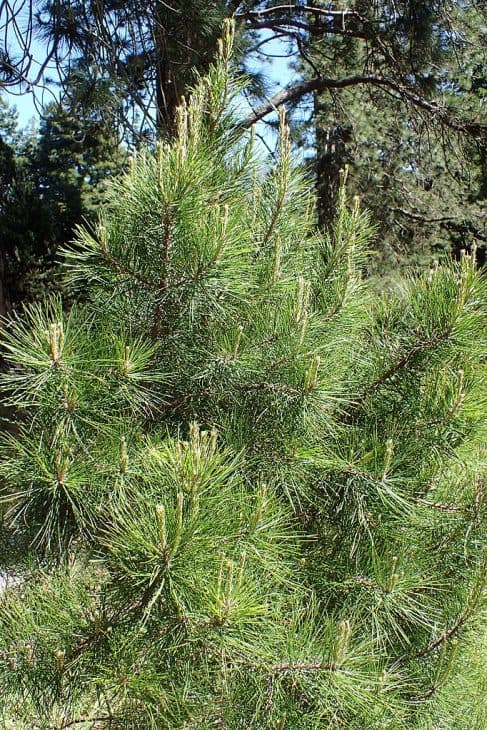
Shortleaf pine trees are very popular in the eastern part of the United States, as well as in some parts of the southwest. These trees get up to 100 feet high and sometimes have trunks that grow to nearly three feet in diameter. Shortleaf pine trees are sturdy and durable trees, and they can grow practically anywhere because they are able to accommodate many growing conditions and nearly all types of soil.
Because shortleaf pine trees tend to have oddly shaped or irregular trunks, they are usually used only for wood pulp and plywood veneer, although some of them can be used as lumber. Even though its commercial use is limited, the shortleaf pine tree is still considered a very versatile and valuable type of tree.
2. Sand Pine (Pinus clausa Chapm ex Engelm)
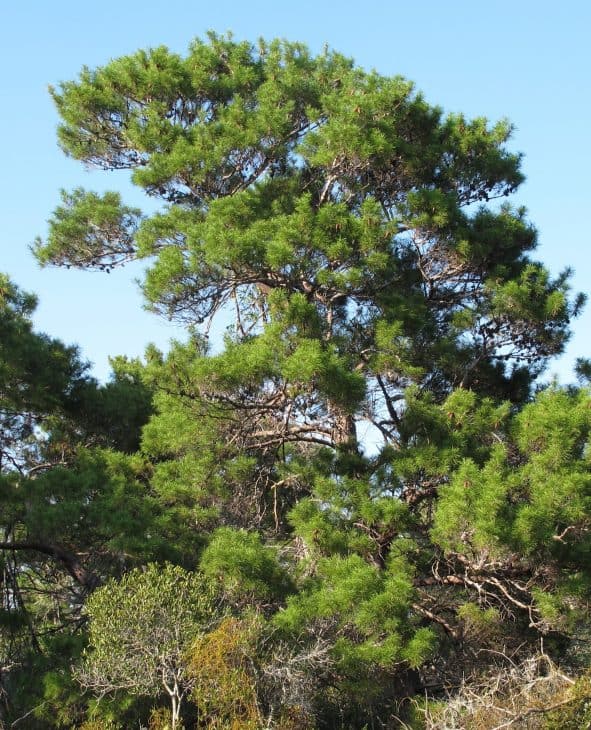
Not only is the sand pine tree found in Alabama, but it is also located in central and western Florida, which is one of the reasons it is sometimes called the Florida spruce pine. It is also known as the scrub pine, and it is available in two types: a shrub that gets to no more than 30 feet high, and a standard tree that gets up to 70 feet in height. The word “clausa” in the Latin name means closed, and it is called this because it has cones that stay closed for years at a time.
Although the Sand pine tree can grow in numerous locations, including both sandy and hot areas, the branches are extra-dense and therefore, the wood is never used in construction projects.
3. Pond Pine (Pinus serotina Michx.)
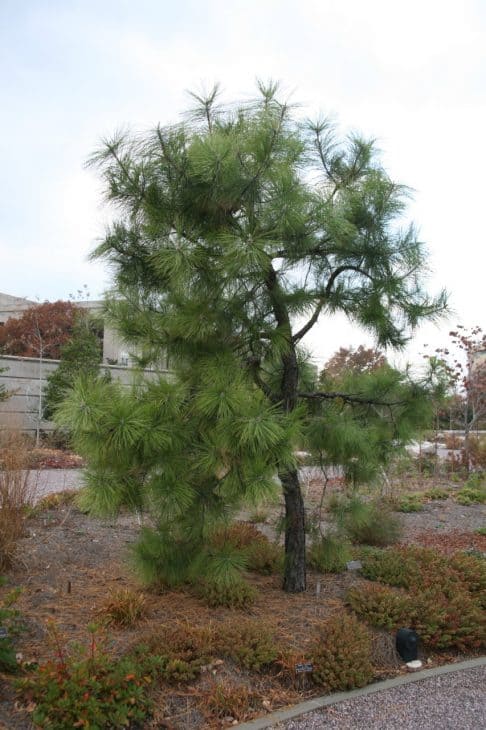
Pond pines are also called marsh pine trees and have an irregular growth pattern, making them look a little on the misshapen side. They can grow up to 70 feet in height and have needles that grow in groups of three or four.
The needles eventually get up to eight inches long. As you can probably tell from the name of this pine tree, the pond pine tree grows near ponds, as well as other wet habitats such as bays and swamps.
4. Loblolly Pine (Pinus taeda)
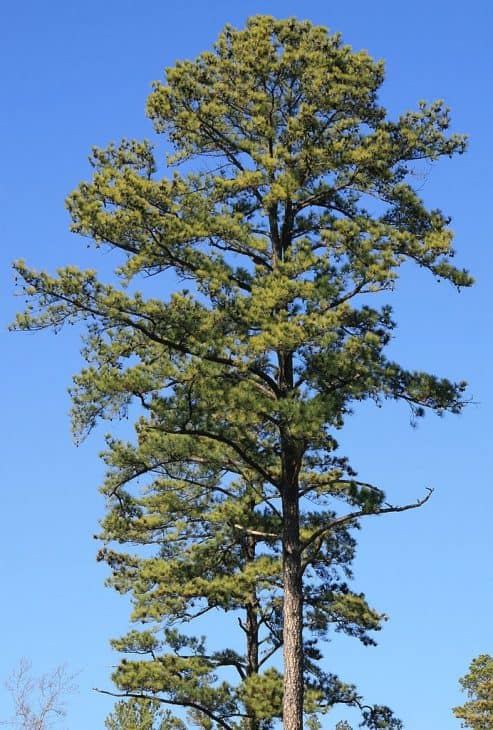
Loblolly pine trees are native to the southeastern part of the United States, and next to the red maple, they are the most common tree in the entire country. Loblolly pines get up to roughly 115 feet in height and are common around swamps and other lowland areas. The needles on the tree grow in groups of three, and the cones are green in the beginning and mature to be around five inches in length.
Furthermore, the seeds of the cones get to be a pale-brown color once they ripen and are around two inches in width. The Congaree National Park in South Carolina is home to the largest Loblolly tree, which has been recorded at nearly 170 feet high.
5. Longleaf Pine (Pinus palustris Mill.)
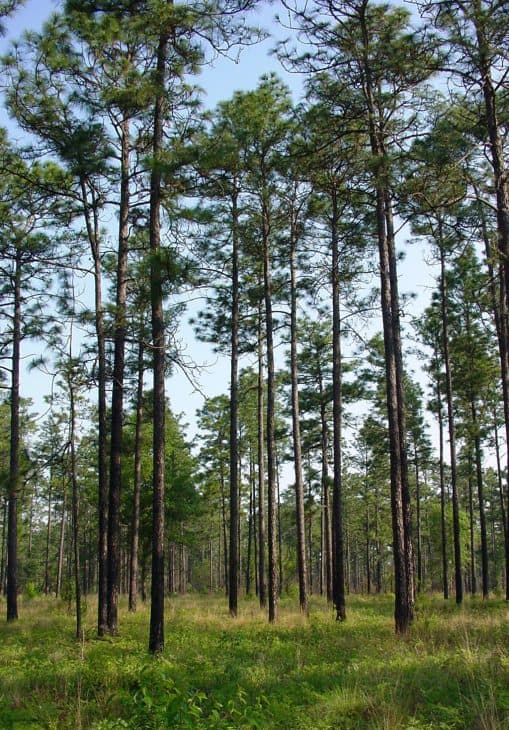
Before extensive logging was commonplace, the longleaf pine tree got to around 150 feet high, but that is no longer the case. Nowadays, it grows to around 115 feet high and has a circumference of around 30 inches. However, this is still an impressive size and as such, the longleaf pine is a tree that is truly a head-turner.
Native to the southeastern part of the United States, the longleaf pine tree is the tree many people think of when they think about the landscape in the south. The wood from this type of pine tree is yellow and resinous, and it doesn’t rot. This is but one of the reasons why the wood is often used for flooring in more upscale homes and offices.
In addition to the flooring, the wood of the longleaf pine is used mostly for lumber and wood pulp.
6. Eastern White Pine (Pinus strobus L.)
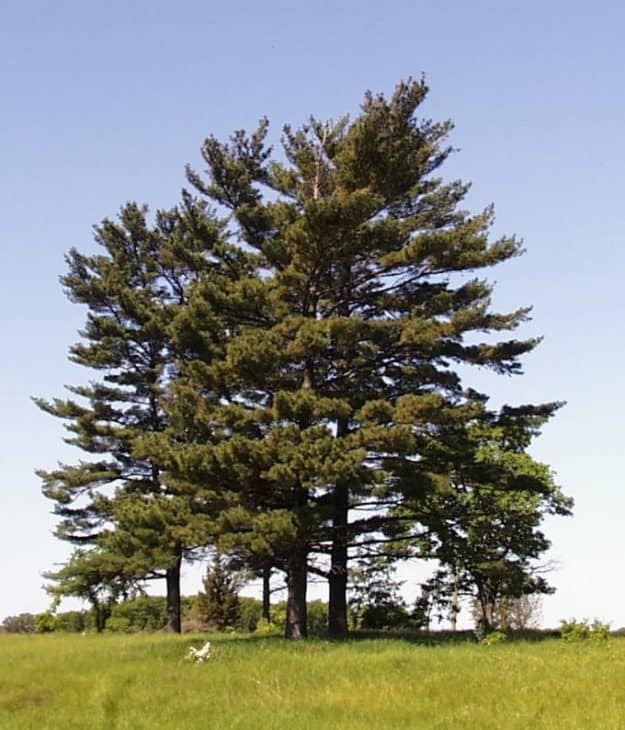
Part of the white pine group, the Eastern white pine tree gets to roughly 180 feet or a little smaller, although in the past some have grown to around 230 feet. It has needles that produce new growth in the summer, as well as long and slender seed cones, making this a very elegant-looking, stately tree that is certainly an eye-catcher.
Eastern white pine trees have wood that is very versatile, as it is used for everything from making furniture to accommodating construction projects, and in the building of ships and barns. One of its most unique uses is creative artwork, where more than one artist has included parts of the tree in various art projects.

